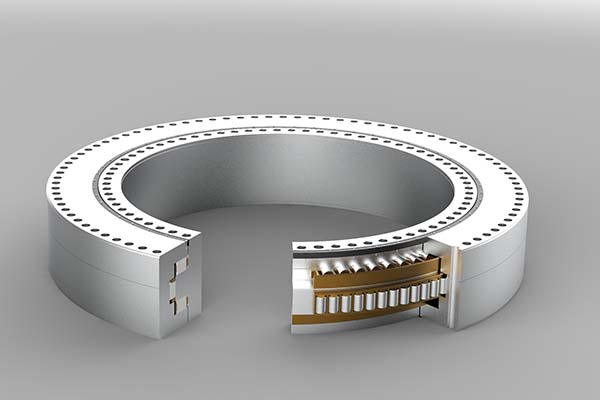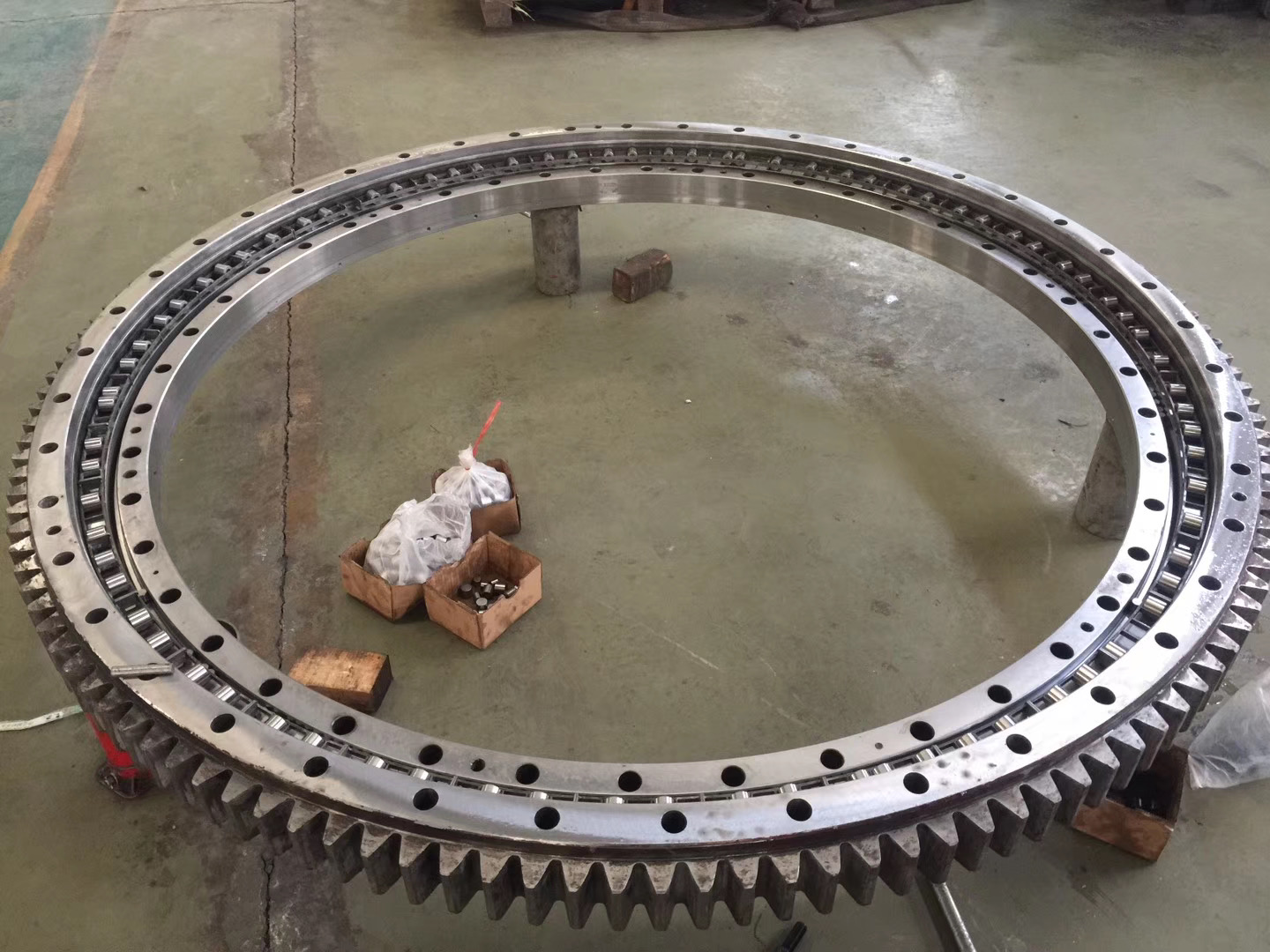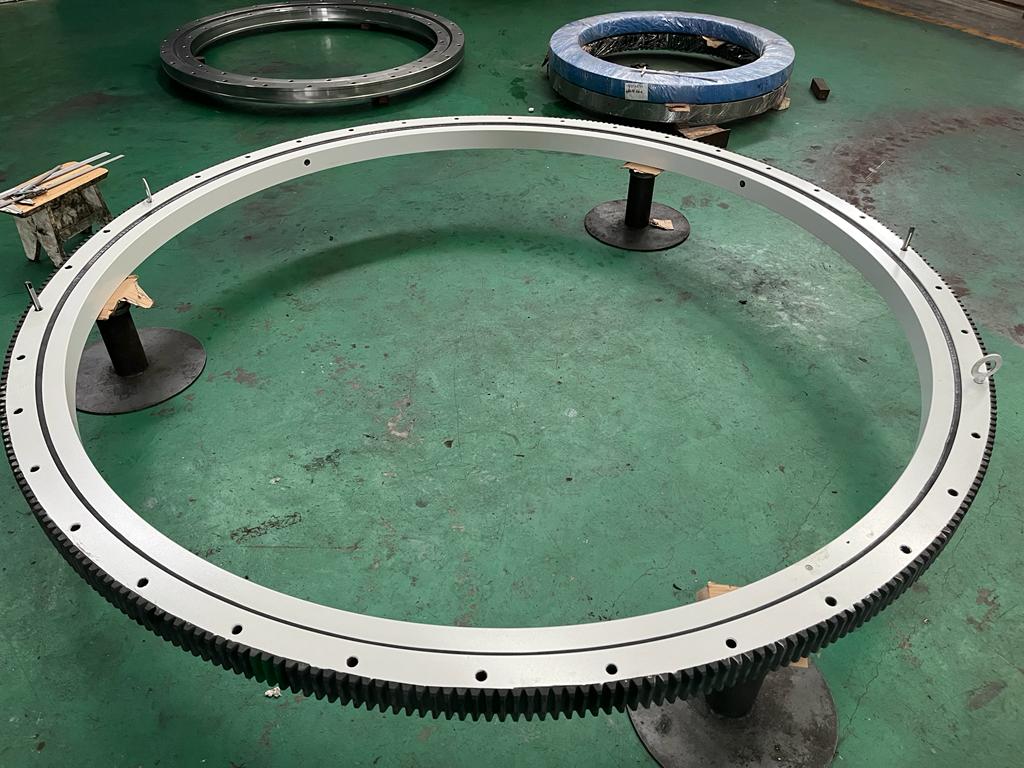Newsroom
What materials are used for wind turbine main shaft bearings?
2024-10-18The selection of materials for wind turbine main shaft bearings is crucial, as these components are at the core of wind power generation systems. To handle the complex operating conditions and long-term operational requirements of wind turbines, bearing materials need to exhibit high strength, fatigue resistance, and corrosion resistance. Below are the common materials used for wind turbine main shaft bearings:

1.Bearing Steel
GCr15 (52100 steel): This is a widely used high-carbon chromium bearing steel, known for its high hardness, wear resistance, and good fatigue strength. It is suitable for general operating conditions and can handle standard loads and speeds.
Advantages: Good wear resistance and high hardness, capable of handling heavy loads.
Disadvantages: Requires a controlled environment, as it can be affected by moisture or corrosive conditions, necessitating additional protective treatments.
2.Carburized Steel
20MnCr5, 18CrNiMo7-6: These materials are carburized steels. After undergoing carburizing processes, the surface achieves high hardness while the core maintains toughness and impact resistance. These materials are typically used for heavy-load applications, making them ideal for the high-impact load conditions of wind turbine main shaft bearings.
Advantages: Excellent surface hardness and wear resistance, while maintaining toughness and impact resistance in the core.
Disadvantages: Complex manufacturing process and higher cost.

3.Stainless Steel
9Cr18, 440C: Stainless steel materials are highly resistant to corrosion, making them suitable for offshore wind farms and other humid environments. Stainless steel offers excellent anti-corrosion properties, enabling long-term operation in harsh corrosive environments.
Advantages: Outstanding corrosion resistance, especially suitable for marine environments and humid conditions.
Disadvantages: Relatively lower strength and hardness, higher cost.
4.High Nitrogen Steel
Example: NitroMax: High nitrogen steel is used in some specialized applications due to its excellent corrosion resistance and wear resistance. It combines high strength and hardness, making it ideal for more demanding wind turbine main shaft bearings.
Advantages: Good wear resistance, superior corrosion resistance, long service life.
Disadvantages: Difficult to process and relatively expensive.

5.Ceramic Materials
In certain high-load and high-speed environments, ceramic rolling elements (e.g., silicon nitride Si3N4) are used in hybrid ceramic bearings. Ceramics offer excellent wear resistance, corrosion resistance, and low density, reducing friction and heat generation inside the bearing and extending its lifespan.
Advantages: Lightweight, wear-resistant, corrosion-resistant.
Disadvantages: Brittle and costly, mainly used in high-performance applications.
6.Special Alloy Steel
To meet the heavy load and long service life requirements of wind turbine main shaft bearings, some special alloy steels (e.g., those containing molybdenum, titanium, etc.) are used in manufacturing. These materials improve fatigue resistance and wear resistance.
Advantages: High strength and fatigue resistance, suitable for high-load applications.
Disadvantages: Difficult to process and higher cost.
7.Special Alloy Steel
To further enhance the wear resistance and corrosion resistance of wind turbine main shaft bearings, certain bearings undergo special surface treatments:
Phosphating: Enhances corrosion resistance.
Chromium or Nickel Plating: Improves anti-rust properties.
Heat Treatment: Processes such as carburizing or induction hardening to increase surface hardness and wear resistance.

Conclusion:
The choice of material for wind turbine main shaft bearings depends on the application environment, load requirements, and maintenance costs. Typically, high-carbon chromium bearing steel (e.g., GCr15) is the standard choice, while in more demanding environments such as offshore wind farms, stainless steel, high nitrogen steel, or alloy materials with surface treatments may be selected to address corrosion and challenging operational conditions.
For more information, feel free to contact QIBR


